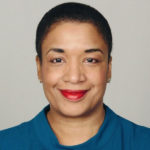By Rosemary Boone, Esri Young Professionals Network (YPN)
As GIS evolves toward web-based applications, the skills required for a successful GIS career are also changing. This article provides advice on how to future-proof your GIS career by continuing your skill development and through community engagement, mentoring, networking, and attendance at conferences. You’ll receive crucial resources you can leverage to become more connected to various GIS community groups and build your own online presence and reputation.
What does it mean to be a GIS professional of the future? This is a valid question, as the world of GIS is constantly evolving. As GIS moves more toward being web-based, the skills needed to be a marketable GIS professional are changing too.
As a Senior Industry Marketing Manager at Esri, and an Advisory Board member for the Esri Young Professionals Network (YPN), I was recently inspired by an Esri YPN webinar, titled Future-Proofing Your GIS Career: Essential Skills and Training for Success, to compile five important tips for future-proofing your GIS career.

1) Stay Connected after You’ve Graduated
Preparing for your future takes a variety of forms and formats. You can build skills with online courses, apply for a certificate in a specialized area, or present at a conference. An important part of your professional development is connecting with, learning from, and sharing with your peers and community groups
Here are ways to include connections and networking in your career development:
Get Involved in GIS Communities
Connect with community groups or networks such as Esri YPN, Women+ in Geospatial, local user groups, associations like URISA, AAG, Women in GIS, and USGIF.
LinkedIn is an excellent platform to stay engaged. You can follow industry experts and learn from the content they create. Start with joining the Esri YPN LinkedIn Group.
If you are a GIS user, Esri Community is one of the largest online GIS communities and is a place to read blogs, ask technical questions, connect with users of GIS technology, submit ideas, and set up RSS feeds. Many Esri products, services, and groups have their own Esri Community space and blog.
Become a Mentor
The best way to grow is to teach someone else. Mentoring, whether formally through a program or informally as a colleague, can help not only the people you mentor to learn, but you as well. Find out if you are eligible to mentor in your department, or get connected with an organization with mentoring programs, such as The URISA Mentor Network, which takes applications throughout the year for both mentors and mentees.
Ethnically Diverse Geospatial Engagement (EDGE) came out with a Beginners Guide to Mentorship with EDGE. Women+ in Geospatial has a mentor program that also reaches an international group. AAG members also can get access to a list of mentors that you can get connected with. (Email Mark Revell to learn more).
You can also browse through the YPN Mentorship space to read up on material and resources around the overall topic of mentorship.
Attend Conferences
Conference-going is a big way to grow your skills and network through attending presentations and workshops to learn about the latest technology trends. Many times, you will be introduced to a new concept or idea while at a conference to take back to your organization that could potentially result in a successful campaign or initiative. The contacts you make at conferences can be leveraged as a resource for future collaborations, troubleshooting, mentors, and potential colleagues.
Some conferences that may interest you include AAG’s Annual Meeting and check out Esri conferences.
2) Equip Yourself to Overcome Challenges
There will be a time where you lack confidence about learning something new when you begin your career. It happens to all and the best of us! Here are ways to approach that challenge when learning something new.
First, remind yourself, “everyone has been new at something once.”
Next, ask questions. It’s best to ask questions at the beginning to show you’re engaged and you’re thinking about the problem. If you feel nervous or confused about something that you might not have the skills to accomplish, know that asking questions is not considered a weakness.
Remember, it’s okay to say, “I don’t know”. Have the mindset to say, “I don’t know but I will figure it out” because chances are the resources are out there for you. When asking quality questions, you demonstrate a sincere thoughtfulness and a willingness to go deeper.
Last, don’t underestimate the knowledge that you do have. It’s important to sometimes take a step back to acknowledge how far you have come in GIS and learning ArcGIS. Imposter Syndrome is a real thing and can be easy to get caught up in.
3) Leverage Resources to Grow Your GIS Skills
There are many resources, both formal and informal, to help keep your GIS skills sharp:
4) Validate or Demonstrate Your GIS Skills
Showcase and validate your skills through programs such as the Esri Technical Certification Program and GIS Certification Institute. Achieving a certificate in GIS can elevate your professional standing and open doors to various career opportunities.
There are costs associated with each program. Esri Technical Certifications charges a fee for the exam, which is proctored online, allowing you to take it at home or in your office. GISCI charges for the exam and a portfolio submission, as well as small annual fees and recertification every three years.
Esri also offers free Massive Open Online Courses (MOOC) on various topics such as Spatial Data Science, Cartography, Imagery, Climate, and more. Each MOOC is six-weeks long and offers a certificate upon completion.
5) Build Your Presence and Reputation in the GIS Community
Sometimes, you just have to put yourself out there. There’s just no way around it no matter how uncomfortable it feels. This takes time, intention, motivation, and tenacity. (As I sit here and write this article, I too am putting myself out there!)
Here are some ways you can begin to build a presence and reputation of your own in the GIS community.
Become a YPN Ambassador
If you are just starting out as a GIS professional, the YPN Ambassador program could be a fit for you. YPN is designed to prompt you to network online and in person, developing professional communication skills and becoming an active participant in the GIS community. Complete the steps in becoming one of three ambassador types and earn your badge and certificate.
Participate in Mapping Challenges and Competitions
Virtual challenges, hackathons, and similar events are a fun way to attract attention and demonstrate your skills in geospatial technology. Some recommendations are:
Leverage Social Media to Boost Your GIS Career
Social media is a powerful tool for building an identity that aligns with your goals and values, enabling you to communicate and connect with the outside world, learn from others, cultivate creativity, and promote your work. By leveraging social media effectively, you can boost your reputation and visibility in the GIS community and establish yourself as an active participant.
Download this ebook, published in collaboration with the URISA Vanguard Cabinet and the Esri Young Professionals Network, to discover how to use social media to supercharge your career, leading to growth opportunities, meaningful connections, and collaboration prospects.
Join a Local YPN Chapter
Esri YPN has established seven chapters across the United States, each hosting two in-person meetups a year. Meetups revolve around networking, meeting industry experts, and learning the latest trends in GIS. Some meetups take place at an Esri regional office and vary in format such as geography trivia, demos, networking activities, and more. Join a chapter near you.
Find Guest Speaking Opportunities
Consider submitting a paper session or abstract to present at a conference. I took that advice and submitted a proposal for a lightening talk at the upcoming GIS-Pro conference. To my amazement, I later received an acceptance email and will be traveling to present! Is this nerve-wracking and a bit uncomfortable for me? Yes! But I know that I will grow professionally as a result and meet people that will make me a stronger and more well-rounded professional.
Rosemary Boone is a Senior Industry Marketing Manager for Esri, concentrating on executing marketing strategies for K-12 schools and higher education institutions. She holds a master’s degree in education technology with an emphasis on multimedia. Prior to her career in marketing, she taught elementary school and taught overseas. In her free time, she likes to listen to music, exercise, and spend time with her two Dachshunds.
Featured Articles is a special section of the AAG Newsletter where AAG sponsors highlight recent programs and activities of significance to geographers and members of the AAG. To sponsor the AAG and submit an article, please contact Oscar Larson olarson [at] aag [dot] org.
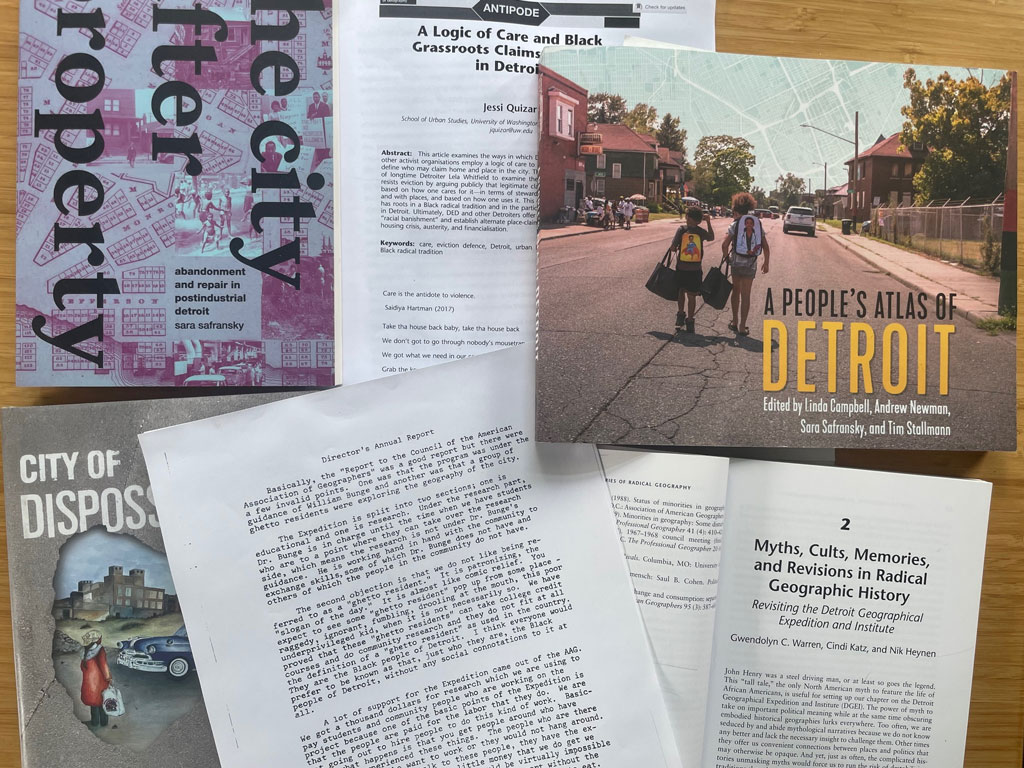
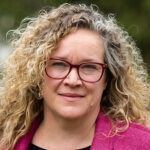
 Nora Butter (she/her) is a junior at George Washington University pursuing a dual B.A. in Environmental Studies and Geography, with minors in Geographic Information Systems (GIS) and Sustainability. Her areas of interest include environmental justice, geomorphology, biogeography, sustainable city planning as well as mapping for representation and aid. In her free time, she enjoys attending concerts, baking, and musical theater. As an Ohio native that grew up in a car-heavy town, Nora enjoys exploring Washington, D.C. via public transportation and loves riding the metro. She’s excited for this summer and the research that follows!
Nora Butter (she/her) is a junior at George Washington University pursuing a dual B.A. in Environmental Studies and Geography, with minors in Geographic Information Systems (GIS) and Sustainability. Her areas of interest include environmental justice, geomorphology, biogeography, sustainable city planning as well as mapping for representation and aid. In her free time, she enjoys attending concerts, baking, and musical theater. As an Ohio native that grew up in a car-heavy town, Nora enjoys exploring Washington, D.C. via public transportation and loves riding the metro. She’s excited for this summer and the research that follows!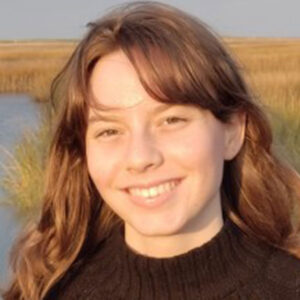 Shayla Flaherty is a senior at Bridgewater State University, pursuing a B.S. in Geography with a concentration in Environmental Planning and Conservation. Her areas of interest include GIS, natural resource conservation, coastal zone management, and ecosystem ecology. Outside of academics, she enjoys painting, dancing, and golfing. She is excited to be working as the AAG’s Media and Communication intern.
Shayla Flaherty is a senior at Bridgewater State University, pursuing a B.S. in Geography with a concentration in Environmental Planning and Conservation. Her areas of interest include GIS, natural resource conservation, coastal zone management, and ecosystem ecology. Outside of academics, she enjoys painting, dancing, and golfing. She is excited to be working as the AAG’s Media and Communication intern.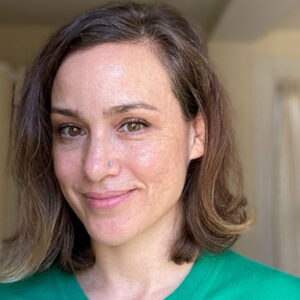 AAG is pleased to welcome Jennifer (Jenni) Jones as the newest addition to our staff as Membership Services Coordinator.
AAG is pleased to welcome Jennifer (Jenni) Jones as the newest addition to our staff as Membership Services Coordinator.
